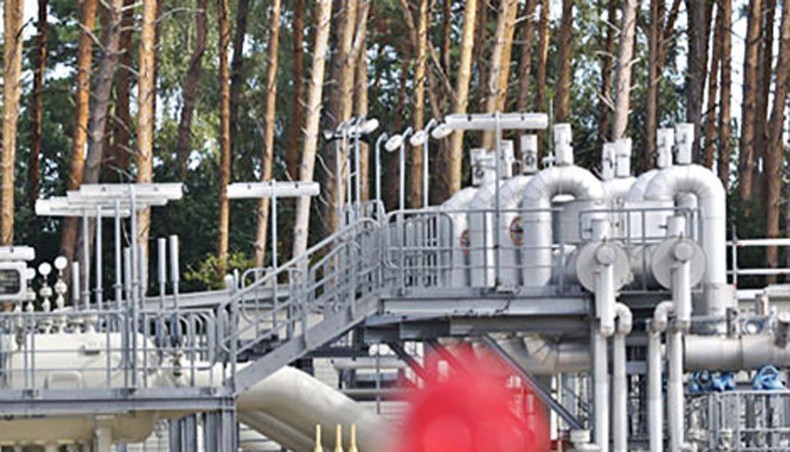
Representational image.
The shortage of gas supply is seriously affecting industries, including knitwear and textile factories, in districts around Bangladesh capital Dhaka, plunging the major export-oriented sector, already affected by a myriad of problems, into further crisis.
The pressure of gas came down to zero from Kanchpur to Rupganj areas in Narayanganj district and some areas of Gazipur, forcing many factory owners to engage sub-contractors in Narsingdi and Mymensingh, where gas supply is relatively better, to maintain their production deadline.
‘The gas crisis turned from bad to worse in the past two months, and production came down to 50 per cent,’ Bangladesh Knitwear Manufacturers and Exporters Association executive president Mohammad Hatem told New Age on Monday.
‘Most of the factories in Narayanganj district have no gas supply and shut down their operations,’ he said, adding that they were struggling to maintain their production despite fewer orders in recent months.
The government data shows the country has a deficit of about 1,200 million standard cubic feet per day against capacity.
On December 5, BKMEA sent a letter to the state minister for power, energy, and mineral resources, Nasrul Hamid, demanding to ensure gas supply to the export-oriented knit factories in Narayanganj district as there had been no gas pressure since October 16.
The letter, signed by BKMEA AKM Salim Osman, also said that 147 dying factories and 420 small, medium, and large knit factories in the Narayanganj region export goods worth Tk 2,500 crore every month.
Bangladesh Oil, Gas, and Mineral Corporation, also known as Petrobangla, chairman Zanendra Nath Sarker said that although the demand for gas in the power sector reduced in the winter, they had to provide more gas to the fertiliser industries.
‘We could not import 350mmcfd LNG due to a shortage of dollars, which caused another problem,’ he added.
BKMEA vice-president and Abed Textile Processing Mills Limited director Abdullah Al Mamun said that they were suffering from an acute gas crisis in the Narayanganj and Gazipur areas.
‘The textile factories in Narayanganj and Gazipur are the most affected. We usually face the gas crisis in winter, but supply shortages make the crisis more acute,’ he said.
He urged the government to ensure uninterrupted gas supply as soon as possible and said that the industry would face an existential crisis in the days to come otherwise.
Mamun claimed that the machines required 10–15 PSI (pounds per square inch, the unit of pressure) for smooth functioning, but now it has come down to 2 PSI in some cases.
Bangladesh Chamber of Industries president Anwar-ul Alam Chowdhury, also the chairman of Evince Group, said that if textile factories were affected, it would also affect the ready-made garment industries.
‘One is connected to the other. So, we are also affected by the gas crisis,’ said Anwar, also a former president of the Bangladesh Garment Manufacturers and Exporters Association.
The state-owned Hydrocarbon Unit under the power and energy ministry estimated Bangladesh’s gas demand in 2021 to be more than 3,500mmcfd.
Bangladesh’s biggest domestic gas supplier, Bibiyana of Habiganj, supplied 1051.7 mmcfd on December 24.
‘I don’t see any solution soon. We do not dig new wells to find gas and cannot import LNG due to the financial crisis,’ said energy expert and former special assistant to the chief advisor of a caretaker government, Mohammad Tamim.
He said that the government should increase domestic production and
bring more LNG to face the crisis.
The gas reserve at Bibiyana, managed by the US multinational oil company Chevron, dropped to 333.44 bcf on December 31, 2022, according to the latest annual report of Petrobangla.
Bibiyana saw its reserves drop by 56 per cent in just a year since December 2021 and by 91 per cent since December 2014.
The country’s total gas consumption stood at 2568.1 mmcfd, including 500 mmcfd of liquefied natural gas, on December 24, against the capacity of 3,760 mmcfd, according to Petrobangla.
The country set the capacity of LNG at 1,000mmcfd but can now distribute only half of its capacity.
Petrobangla and Titas Gas Transmission and Distribution Company Limited are trading blame with each other over the gas crisis in their industries.
‘There is a problem with the Titas gas pipeline. It is not properly working, and this is why the gas does not reach factories,’ said Petrobangla chair Zanendra Nath Sarker.
He added that they needed to supply a considerable amount of gas fertiliser production, which would continue until February.
He said that they imported 850mmcfd LNG in the previous year, but this year imports came down to 500mmcfd.
Denying the issue with the pipeline, Titas managing director Md Haronur Rashid Mullah said that they were getting 300-350mmcfd less gas daily against demand.
‘If we do not get adequate gas from Petrobangla, how can we supply it to others?’ he asked.
New Age









